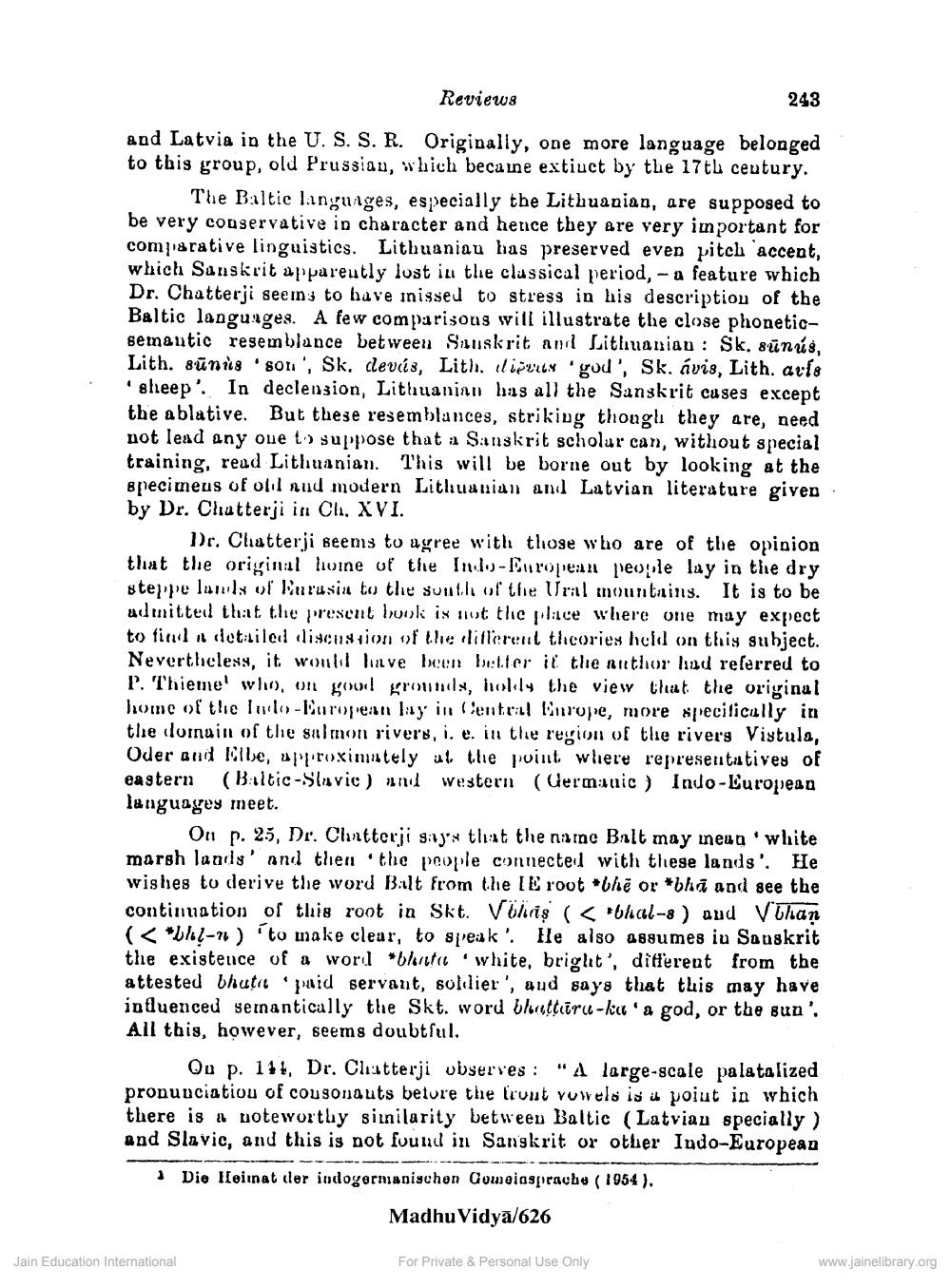________________
Reviews
243
and Latvia in the U.S. S. R. Originally, one more language belonged to this group, old Prussiau, which became extiuct by the 17th ceutury.
The Baltic languages, especially the Lithuanian, are supposed to be very conservative in character and hence they are very important for comparative linguistics. Lithuaniau has preserved even pitch accent, which Sanskrit apparently lost in the classical period, - a feature which Dr. Chatterji seems to have inissed to stress in his description of the Baltic languages. A few comparisons will illustrate the close phoneticsemantic resemblance between Sanskrit and Lithuanian : Sk. sünús, Lith. sūnus 'son', Sk, devús, Lith. lipunan 'god', Sk. avis, Lith. arís
sheep'. In declension, Lithuanian has all the Sanskrit cuses except the ablative. But these resemblances, striking though they are, need not lead any oue to suppose that a Sanskrit scholar can, without special training, read Lithuanian. This will be borne out by looking at the specimeus of olilnud modern Lithuanian and Latvian literature given. by Dr. Chatterji in Ch. XVI.
Dr. Chatterji seems to agree with those who are of the opinion that the original line of the Indo-European people lay in the dry steppe laws of Rurasia to the suit of the Ural mountains. It is to be udmitted that the present book is not the place where one may expect to find it detailed discussion of the villcrent theories held on this subject. Nevertheless, it would have been better if the author had referred to P. Thieme' who), on good grounds, holily the view that the original home of the lub-European lily in Central Europe, more specifically in the domnuin of the salmon rivers, i. e. in the region of the rivers Vistula, Oder and Cile, approximately if the point where representatives of eastern (Baltic-Slavic ) und Western (Germanic ) Indo-European languages meet.
Ou p. 2.3, Dr. Clintterji ginys that the name Balt may ineun white marsh lands' and then the people connected with these lands'. He wishes to derive the word Balt from the IB root *bhe or *bha and see the continuation of this root in Skt. Vbhris (< hal-8) and V bhan (<bhl-1) 'to make clear, to speak'. He also assumes iu Sauskrit the existence of a word *blant white, bright', different from the attested bhutit paid servant, soldier', aud says that this may have influenced semantically the Skt. word bhattīru-ku' a god, or the sun'. All this, however, seems doubtful.
Ou p. 111, Dr. Chutterji vbserves : "A large-scale palatalized pronunciatiou of cousonauts beture the trout vowels is it poiut in which there is a noteworthy silnilarity between Baltic (Latvian specially ) and Slavic, and this is not found in Sanskrit or other Indo-European
1 Die leinat der indogermanischen Comeinsprache (1954),
Madhu Vidya/626
Jain Education International
For Private & Personal Use Only
www.jainelibrary.org




